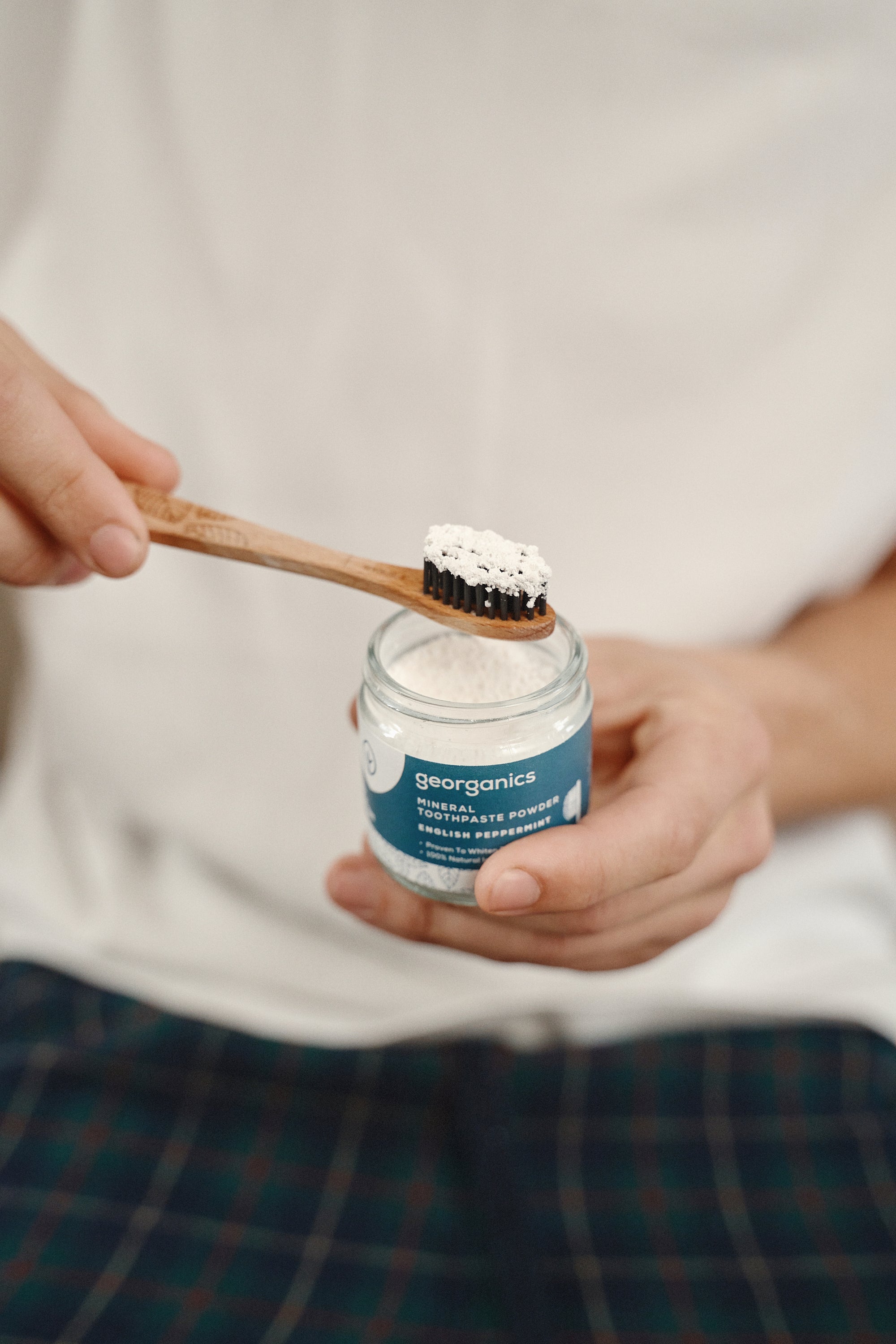Teeth whitening powder is a popular alternative to traditional toothpaste, designed to whiten teeth and reduce plaque and discoloration. Unlike toothpaste, which comes in a tube, whitening powder is typically packaged in a jar or tin and uses abrasives and active ingredients to achieve its whitening effects. This article explores the benefits, types, and usage of teeth whitening powder, offering a comprehensive guide for those looking to enhance their smile.
What is whitening toothpowder?
Teeth whitening powder is a dental product aimed at whitening teeth and reducing plaque. It is particularly effective against stains caused by deeply colored foods and drinks such as tea, coffee, and red wine. The powder works by using abrasives to remove stains and can include active whitening ingredients like hydrogen peroxide, PAP (Phthalimidoperoxycaproicacid), or activated charcoal to enhance its whitening effect. Georganics produces toothpaste powders in various flavours to adapt to everyone’s preferences!
Types of teeth whitening powders
There are several types of teeth whitening powders available, each with unique properties:
- Activated charcoal whitening powder:
- Description: Contains activated charcoal, a natural abrasive that removes surface stains from substances like coffee, wine, and tobacco.
- Benefits: Natural and free from harsh chemicals.
- Mechanism: Works through abrasion to lift surface stains.
- Try out our natural and plastic-free Charcoal whitening powder !
- Hydrogen peroxide whitening powder:
- Description: Contains hydrogen peroxide, a chemical bleaching agent.
- Benefits: Highly effective in achieving a whiter tooth color.
- Potential side effects: Can cause tooth sensitivity, enamel damage, and gum irritation.
-
Mechanism: Penetrates the enamel to oxidize stains and lighten tooth color.
- 3. PAP (Phthalimidoperoxycaproicacid) whitening powder:
- Description: A newer chemical-based whitening agent is considered less irritating than hydrogen peroxide.
- Benefits: Reduced risk of sensitivity.
-
Mechanism: Oxidizes stains to whiten teeth.
How to use whitening powder
- Wet your toothbrush.
- Dip the toothbrush into the toothpowder, starting with a small amount.
- Brush your teeth for at least two minutes, ensuring all surfaces are covered.
- Spit out the tooth powder and rinse your mouth thoroughly with water.
- Rinse your toothbrush and store the tooth powder in a dry place.
Pros and cons of charcoal whitening powder
Pros:
- Natural stain removal: Uses natural methods to remove surface stains without bleaching agents.
- Improves breath: Absorbs impurities that can cause bad breath.
- Easy to use: Simple addition to your oral hygiene routine.
- Cost-effective: Typically less expensive than other whitening solutions.
- Eco-friendly: Packaging is often recyclable or biodegradable.
Cons:
- Abrasiveness: Can be abrasive on tooth enamel, potentially causing damage with prolonged use.
- Surface-only stain removal: Does not remove stains below the enamel.
- Messiness: Can be messy to use.
Conclusion
Teeth whitening powder offers a versatile and effective solution for those looking to enhance their smile while maintaining oral health. Whether opting for natural activated charcoal or chemical-based powders like hydrogen peroxide or PAP, there is a suitable option for everyone. Products like Georganics Charcoal Powder provide a range of benefits, from natural ingredients to dentist-approved formulations.
Incorporating teeth whitening powder into your daily routine can help you achieve a brighter, whiter smile.




